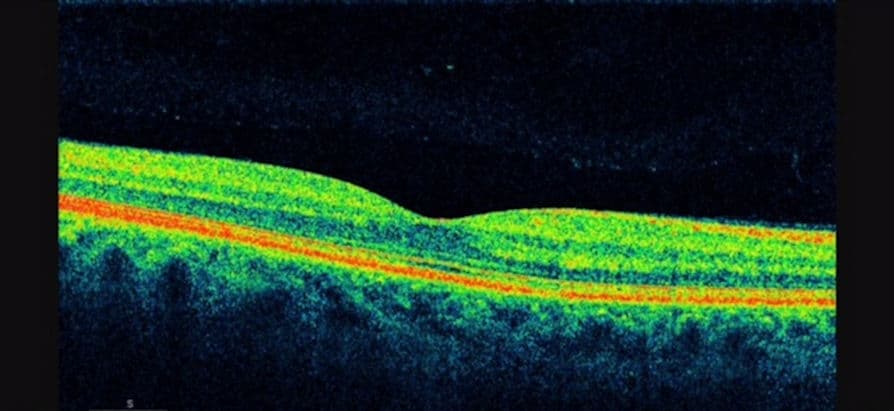Carotenoids play an important role in safeguarding eye health and functionality, with four key players standing out: beta-carotene, vitamin A (retinol), lutein, and zeaxanthin. This diverse group of vitamin carotenoids isn’t just essential for vision; it also supports immune function, cardiovascular health, and aids in cancer prevention.
The Vital Functions of Carotenoids in Eye Health
Beta-carotene and vitamin A are instrumental in maintaining retinal function, ensuring optimal vision. Meanwhile, lutein and zeaxanthin are important for shielding the retina, particularly the delicate macular region, from harmful oxidative stressors.
With these essential carotenoids, your eyes can experience enhanced protection and support, promoting long-term visual acuity and overall eye health.
Essential Role of Beta-Carotene and Vitamin A
Beta-carotene boasts multifaceted benefits, serving as both a potent free radical scavenger and antioxidant. Additionally, it functions as a provitamin, meaning it acts as a precursor to vitamin A (retinol). The journey from beta-carotene to vitamin A unfolds within the body:
Beta-carotene >> Vitamin A (retinol) >> Retinal (retinaldehyde)
Once synthesized, retinal undergoes processing in the retina, where it transforms into a light-sensitive molecule crucial for the visual cycle of photoreceptors, particularly rods. This retinal-based molecule plays a important role in light detection. Notably, a deficiency in vitamin A is commonly associated with night blindness, underscoring its indispensable role in maintaining optimal vision.
Clinical Studies on Vitamin A
Vitamin A and beta-carotene have been extensively studied as supplements beneficial for age-related macular degeneration (ARMD), cataracts, retinitis pigmentosa, dry eyes, and thyroid eye disease. Research suggests that their antioxidant properties and role in maintaining retinal health make them promising interventions for these ocular conditions, offering potential support in preventing or managing their progression. e.
Vitamin A has not been recommended as a supplement for those with inherited macular dystrophies, such as Stargardt’s disease (ABC A-4 mutation), Best’s disease, and cone-rod dystrophies. It is thought to cause an increase in deposits resulting in toxicity and death to the cells of the retina. (Read more.) Clinical trials are now underway for a modified form of Vitamin A which is safer for those with the ABC A-4 mutation. (ALK-001 and Stargardt’s disease) (clinicaltrials.gov)
Supplementation of beta-carotene for smokers and former smokers has not been recommended because of a possible risk of developing lung cancer. (See safety concerns, Medline)
Dietary Sources of Vitamin A
Vitamin A, which is formed in the body from beta-carotene by a biochemical process, can be found as preformed vitamin A from animal sources: chicken, fish oils, egg yolks, and beef products of cows which are grass-feed: liver, butter, whole milk, cheese, and cream.
The recommended daily dietary intake of Vitamin A for men is 900 micro-grams and 700 mcg for women. Taking large doses of Vitamin A does not insure healthy eyes.
Vitamin A is a fat soluble nutrient that is stored in the body. Those who supplement excess Vitamin A, greater than 3000 mcg per day, may experience Vitamin A toxicity. There are many side effects associated with hypervitaminosis A including visual disturbances, headache, hair loss, dry skin, jaundice, and sunlight sensitivity. Avoid high dose Vitamin A supplements.
Dietary Sources of Beta-carotene
Beta-carotene, which is the provitamin of Vitamin A, is from plant sources. The carotenoids, as a group are the pigment of plants. It is easy to remember, because the carotenoid-rich plants are the ones which are highly pigmented such as orange foods: carrots, sweet potatoes, apricots, yellow foods like squash and mangos, and green leafy vegetables like spinach and kale, and peppers which come in all 3 colors.
The absorption and utilization of beta-carotene by the body are influenced by the pre-existing levels of vitamin A already present within the body, owing to its role as a provitamin to vitamin A.
The Carotenoids: Lutein and Zeaxanthin
Safeguarding Macular Health: The Protective Role of Lutein and Zeaxanthin
How Lutein and Zeaxanthin effect MPD (macular pigment density) and Why It is Important
Macular Pigment Optical Density (MPOD) is a technique of measuring the concentration of these pigmented carotenoids in the macula area. This can indicate the level of protection to the macula and the risk for developing AMD. Patients with lower levels of macular pigment are exposed to more harmful blue light, increasing their risk of developing AMD. These patients are at greatest need of nutritional supplementation. (Ref: Macular pigment and risk for age-related macular degeneration…)
MPOD is measured using a specialized instrument that presents the patient with flickering lights of blue and green. The blue wavelength is absorbed by the macular pigment, the green wavelength of light is not absorbed by the macular pigment. The person being tested is told to click the button when they detect flicker, as the radiance of the blue light is adjusted. This test is can be done in the doctor’s office. It is quick and easy.
Studies have shown that the higher concentration of macular pigment, formed by the accumulation of lutein and zeaxanthin, the lower the risk for developing macular degeneration. Another study suggested that supplementing with lutein and zeaxanthin partially reversed vison loss due to macular degeneration. (Ref: Effect of lutein and zeaxanthin on macular pigment…).
Dietary Sources of Lutein and Zeaxanthin
There was a study reported in the British Journal of Ophthalmology which found that egg yolks and corn had the highest levels of lutein and zeaxanthin, but could be found in most green leafy vegetables and colored fruits and vegetables. Lutein enriched egg yolks can be found that were naturally formed by feeding the chickens pigment -rich feed.
Eye Vitamins and the Power of Carotenoids Insights from the AREDS Studies
The NIH National Eye Institute conducted a groundbreaking study known as the ARED Study, examining the effects of supplementation on the progression of macular degeneration. In its sequel, AREDS 2, researchers introduced lutein and zeaxanthin into the supplementation regimen.n.
They found that these two carotenoids reduce the risk for developing advanced age-related macular degeneration (ARMD) by 25% . According to the AREDS 2 recommendation, a daily intake of lutein at 10 mg and zeaxanthin at 2 mg is advised.
The AREDS 2 document: AREDS2: Perspectives, Recommendations, and Unanswered Questions
The AREDS 2 formula:
Vitamin C 500mg / per day
Vitamin E 400 IU / per day
zinc 80 mg / per day
copper 2 mg / per day
lutein 10 mg /per day
zeaxanthin 2 mg / per day
Other Eye Vitamin related articles:
Astaxanthin and Vision Benefits
Meso-zeaxanthin, The Third Carotenoid for Macular Health
3 Most Commonly Recommended Supplements for Prevention of Macular Degeneration
Brain Health: Another Good Reason to Supplement with the Carotenoids
Recent research has unveiled a link between the levels of lutein and zeaxanthin in the brain and those in the macula. While studies have long extolled the benefits of these carotenoids for visual performance, attention has now turned to their potential impact on brain function.
Numerous investigations have looked into this intriguing question, with initial findings indicating a promising relationship between lutein and zeaxanthin levels, as measured by MPOD (macular pigment optical density), and cognitive function in older adults (Age and Aging, Neurol Aging
Neurol Aging )
)
Cognitive functions encompass a spectrum of skills important for everyday life, including learning, memory, problem-solving, and attention. Emerging evidence suggests a close correlation between the concentrations of lutein and zeaxanthin in both the retina and the brain. In fact, individuals with lower macular pigment levels have been shown to exhibit diminished cognitive function.
Furthermore, carotenoid supplementation has demonstrated benefits not only for older adults but also for younger and healthier individuals, highlighting their potential as cognitive enhancers (Nutrients ).
).
Ongoing research is exploring the potential of macular carotenoids reducing the progression of Alzheimer’s disease, offering a beacon of hope in the fight against this debilitating condition ( J Alzheimers Dis. ).
).
In the End…
Carotenoids represent a diverse array of nutrients sourced from both plants and animals, playing a pivotal role in promoting overall health. Their potent antioxidant, anti-inflammatory, and protective properties are indispensable in combating diseases such as cataracts, age-related macular degeneration (AMD), glaucoma, and diabetic retinopathy, all of which stem from pro-oxidant and inflammatory pathways.
Ongoing research continues to unveil the therapeutic potential of carotenoids in managing and even preventing these degenerative eye conditions, offering hope for improved eye health and well-being.

